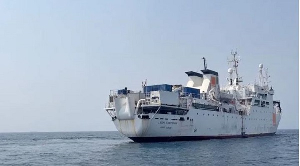Aquaculture production of the country has increased from 38,547metric tonnes in 2014 to 46,250 metric tonnes in 2015, an increase of 20 percent.
The sector produced 126,450,000 fingerlings out of a target of 150,000,000 set by the Ministry of Fisheries and Aquaculture Development.
This resulted in the reduction of fish imports from 145,910metric tonnes in 2014 to 102,874.95metric tonnes in 2014.
The sector minister, Mrs. Sherry Ayittey, revealed this at the 31st National Farmers Day at Bolgatanga in the Upper East Region on the theme ‘Transform Ghana: Invest in Agriculture’, which is focused on increasing private sector investment in the agricultural sector to transform the country’s rural economies and halt rural-urban migration.
Fish capture, processing, marketing and associated services constitute a significance source of livelihood in Ghana, with the sector generating over US$Ibillion in revenue each year and accounting for at least 4.5 percent of Ghana’s GDP.
Mrs. Ayittey said government is committed to positioning the fishery sector as a viable investment destination, for private capital and create an enabling environment for fisheries development in the country.
Government, she said, will support farmers with input credit schemes for existing farms and startups in order to strengthen aquaculture extension delivery to support the nucleus and out-grower farm concept.
According to her, in the face of dwindling catches in the capture-fisheries sector, Aquaculture provides an important alternative fish production method and offers excellent economic growth opportunities; adding that the ministry has therefore initiated programmes in that direction to enhance and sustain fish production in the country.
“As part of efforts to reduce poverty in fishing communities, the ministry will collaborate with relevant stakeholders to roll-out fisheries nucleus-out grower input support schemes in 25 fishing communities along the Volta Lake.”
The scheme, when implemented, she said, will increase aquaculture fish production from 46,250mt to the target of 85,000mt, which will create about 2,252 indirect jobs for women and unemployed rural youth within the fish value chain she stressed.
Mrs. Ayittey said though the sector is now faced with lack of quality feed, the ministry will facilitate increased supply of high quality fish feed and other aquaculture logistics through collaboration with the private sector to ensure a significant increase of farmed fish in coastal areas.
“For the infrastructure to ensure that post-harvest practices meet modern standards six cold-stores have been constructed in six communities: namely New Takoradi, Nyannyano, Kormantse, Prampram, Shama and Half-Assini,” he said.
The minister said a functional data centre has been established at the ministry to promote research that will provide information on the entire aquatic environment including fish stock levels, water quality and fish diseases as well as promote evidence-based policy decision-making and planning.
Business News of Tuesday, 8 December 2015
Source: B&FT

















